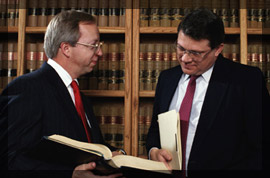Home | Glossary | Resources | Help | Contact Us | Course Map
Archival Notice
This is an archive page that is no longer being updated. It may contain outdated information and links may no longer function as originally intended.
The DNA analyst should understand the significance of the evidence. A chart drawn by the DNA analyst will help the prosecutor understand the analyst's conclusions, especially when multiple samples have been typed. The DNA analyst should believe in the accuracy and reliability of the science and be able to convey this to a jury.
During the meeting, the prosecutor should review the DNA analyst's qualifications, prior court experience, and number of times qualified in court as an expert witness. The prosecutor should also discuss the anticipated order of evidence for trial. This meeting enables the prosecutor to determine how strong a witness the DNA analyst will be at trial. If time and resources allow, it can be beneficial for the prosecutor to meet several times with the DNA analyst.
Additional Online Courses
- What Every First Responding Officer Should Know About DNA Evidence
- Collecting DNA Evidence at Property Crime Scenes
- DNA – A Prosecutor’s Practice Notebook
- Crime Scene and DNA Basics
- Laboratory Safety Programs
- DNA Amplification
- Population Genetics and Statistics
- Non-STR DNA Markers: SNPs, Y-STRs, LCN and mtDNA
- Firearms Examiner Training
- Forensic DNA Education for Law Enforcement Decisionmakers
- What Every Investigator and Evidence Technician Should Know About DNA Evidence
- Principles of Forensic DNA for Officers of the Court
- Law 101: Legal Guide for the Forensic Expert
- Laboratory Orientation and Testing of Body Fluids and Tissues
- DNA Extraction and Quantitation
- STR Data Analysis and Interpretation
- Communication Skills, Report Writing, and Courtroom Testimony
- Español for Law Enforcement
- Amplified DNA Product Separation for Forensic Analysts


